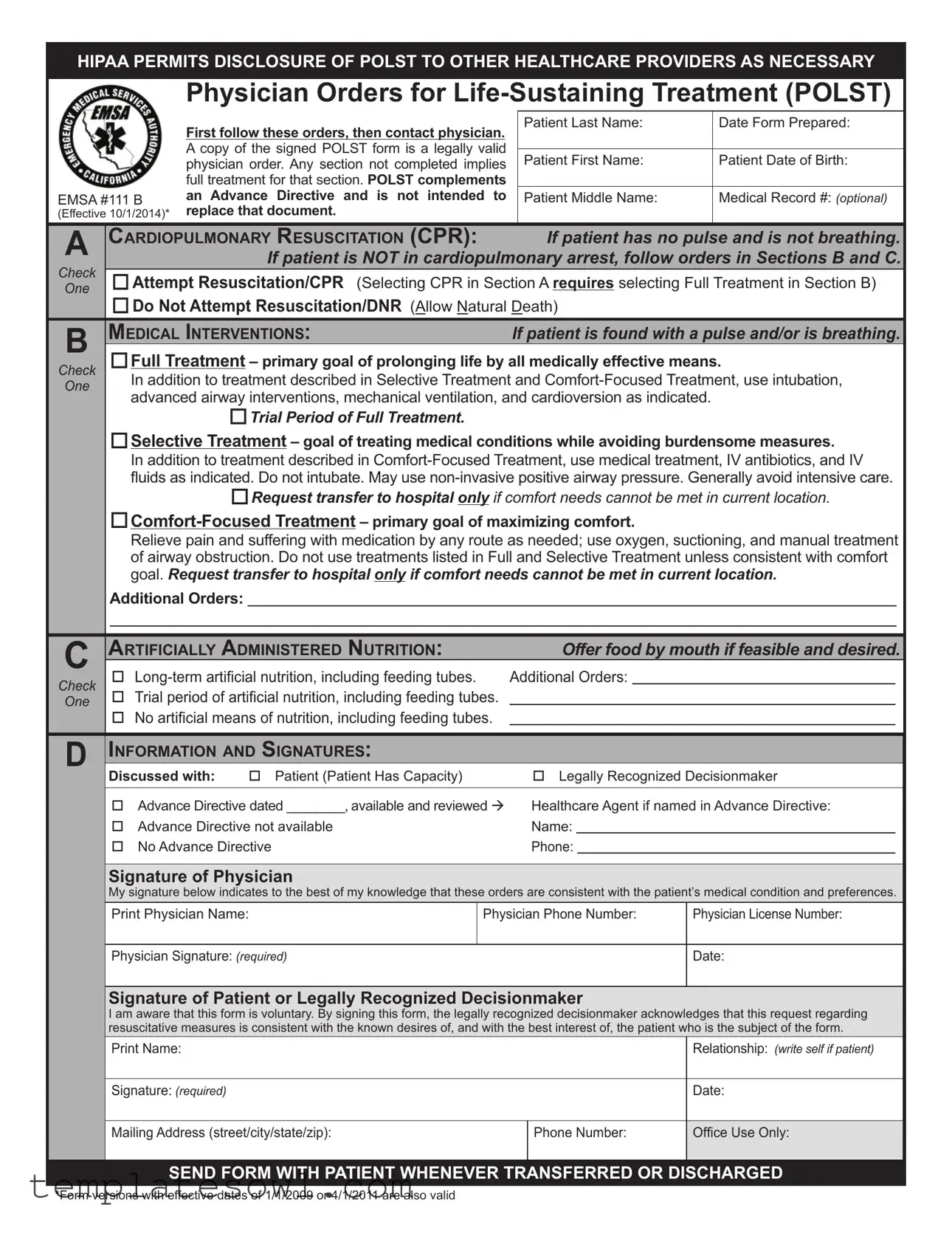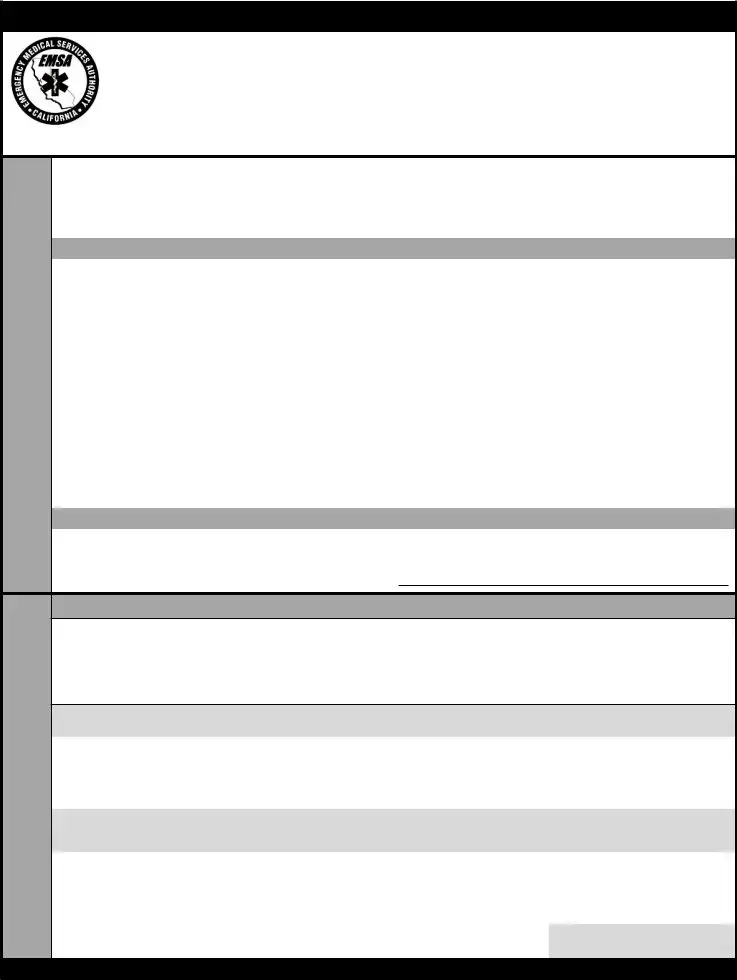Directions for Healthcare Provider
Completing POLST
•Completing a POLST form is voluntary. California law requires that a POLST form be followed by healthcare providers, and provides immunity to those who comply in good faith. In the hospital setting, a patient will be assessed by a physician who will issue appropriate orders that are consistent with the patient’s preferences.
•POLST does not replace the Advance Directive. When available, review the Advance Directive and POLST form to ensure consistency, and update forms appropriately to resolve any conlicts.
•POLST must be completed by a healthcare provider based on patient preferences and medical indications.
•A legally recognized decisionmaker may include a court-appointed conservator or guardian, agent designated in an Advance Directive, orally designated surrogate, spouse, registered domestic partner, parent of a minor, closest available relative, or person whom the patient’s physician believes best knows what is in the patient’s best interest and will make decisions in accordance with the patient’s expressed wishes and values to the extent known.
•A legally recognized decisionmaker may execute the POLST form only if the patient lacks capacity or has designated that the decisionmaker’s authority is effective immediately.
•POLST must be signed by a physician and the patient or decisionmaker to be valid. Verbal orders are acceptable with follow-up signature by physician in accordance with facility/community policy.
•If a translated form is used with patient or decisionmaker, attach it to the signed English POLST form.
•Use of original form is strongly encouraged. Photocopies and FAXes of signed POLST forms are legal and valid. A copy should be retained in patient’s medical record, on Ultra Pink paper when possible.
Using POLST
•Any incomplete section of POLST implies full treatment for that section.
Section A:
•If found pulseless and not breathing, no deibrillator (including automated external deibrillators) or chest compressions should be used on a patient who has chosen “Do Not Attempt Resuscitation.”
Section B:
•When comfort cannot be achieved in the current setting, the patient, including someone with “Comfort-Focused Treatment,” should be transferred to a setting able to provide comfort (e.g., treatment of a hip fracture).
•Non-invasive positive airway pressure includes continuous positive airway pressure (CPAP), bi-level positive airway pressure (BiPAP), and bag valve mask (BVM) assisted respirations.
•IV antibiotics and hydration generally are not “Comfort-Focused Treatment.”
•Treatment of dehydration prolongs life. If a patient desires IV luids, indicate “Selective Treatment” or “Full Treatment.”
•Depending on local EMS protocol, “Additional Orders” written in Section B may not be implemented by EMS personnel.
Reviewing POLST
It is recommended that POLST be reviewed periodically. Review is recommended when:
•The patient is transferred from one care setting or care level to another, or
•There is a substantial change in the patient’s health status, or
•The patient’s treatment preferences change.
Modifying and Voiding POLST
•A patient with capacity can, at any time, request alternative treatment or revoke a POLST by any means that indicates intent to revoke. It is recommended that revocation be documented by drawing a line through Sections A through D, writing “VOID” in large letters, and signing and dating this line.
•A legally recognized decisionmaker may request to modify the orders, in collaboration with the physician, based on the known desires of the patient or, if unknown, the patient’s best interests.
This form is approved by the California Emergency Medical Services Authority in cooperation with the statewide POLST Task Force.
For more information or a copy of the form, visit www.caPOLST.org.


